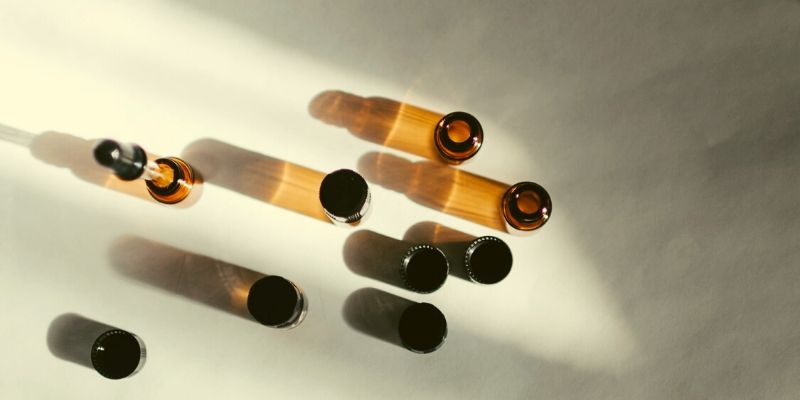Incense gives me a headache! This phrase is often uttered by people who inhale its scent. Many wonder why does incense make my head hurt?
Incense has been used since ancient times, particularly in religious services. This item is popular for its spiritual connections and strong aroma. A few also use it to help their home smell better.
While many enjoy burning it, incense can have some negative side effects. One of the most common is headaches.
This article will explore the reasons incense can produce headaches. You’ll also find a handful of alternatives to try if you want that aromatherapy experience without the incense.
Incense 101

Incense is made out of biotic materials, like sage and resin, that is burned to create a strong aroma. Incense is typically rolled into a very thin stick and the ends can be ignited with a lighter. Once lit, the incense will begin to burn and release smoke and fragrances. Because it creates ash, you need to place the incense in a holder. This will collect the ash so you can dispose of it later.
While incense usually comes in a stick form, it also can come as incensed wood, coils, incense cones, and sachets.
Incense has been used for thousands of years for ritual, spiritual, and religious purposes. Through various cultures and environments, incense has taken on several meanings.
Incense Gives Me a Headache – The Secret Behind It

Can incense cause headaches, really? It doesn’t seem that incense would! But yes, incense certainly can cause headaches.
Incense can cause headaches for a few reasons. One is because it may contain benzene. This chemical emits a sweet aroma, but can irritate the nervous system. When your nervous system becomes desensitized by the chemical, it will cause you to develop a headache.
In addition to this, some incense could have formaldehyde. Studies have shown that when incense burns in a home, it can emit up to 103 ppbv. The more often you burn it, the more your residence will be filled with this toxic chemical. It’s a good way to get rid of pesky fruit flies!
It can be hard to determine which incense is natural, and which contain questionable substances. The language large companies like HEM incense use is vague, and it’s not always clear if popular brands like HEM incense are synthetic or natural.
An additional concern is charcoal from resin incense censers. Charcoal can be harmful to inhale, and you may want to choose an electric incense burner for this reason.
In some ways, incense can be harmful to your health, as well as the health of cats and dogs. And remember, the ash should be cleaned from the incense burner regularly. Also, be wary of incense damaging your walls and triggering those darned smoke detectors.
Improve Air Circulation
The easiest way to mitigate headaches from incense is to improve air circulation in the area where you’re burning incense. Open a window, open a door, get some cross ventilation going to move the air around a bit.
You could even get a fan to improve circulation, but often opening windows and/or doors will solve the problem.
Are Incense Headaches Dangerous?
If you suffer from one headache when burning incense, it probably won’t cause you much harm. However, the longer you expose yourself to it, the more troublesome they could be. You might find that your headaches feel more intense and happen frequently. Over time, the headaches could also affect your memory and focus.
Burning Incense Side Effects
Besides headaches, incense could result in a few other health risks. These include:
- Asthma
- Cancer
- Poor metabolism
- Heart disease
- Chronic inflammation
5 Alternatives to Avoid Incense Headaches
Incense gives me a headache, so what can I use instead?
If you enjoy incense but don’t want to risk harming your health, there are a few similar alternatives you could consider.
Essential Oil Diffuser

Essential oils are a great way to fill a room with a calming scent. Unlike incense, it doesn’t create smoke. Instead, it a vapor that contains traces of essential oil. Sometimes this oil is expelled through a humidifier, sometimes through a nebulizer. But most commonly an essential oil diffuser is used, similar to the one shown above by ASAKUKI.
The oils are derived from plant oils that go through a distillation process. The extract will then be mixed with a carrier oil.
There are a vast amount of essential oils you can choose from. Most of these also come with their own health benefits.
Peppermint
Peppermint essential oil can increase your energy. It can also decrease stress.
Rose
You can use rose essential oil to reduce anxiety. It will also fill the room with a delicious floral scent.
Chamomile
This herb can boost your mood and reduce feelings of negativity.
Jasmine
Jasmine is best to use to calm depression and anxiety. It can also encourage you to sleep.
Sandalwood
Sandalwood is known for its soft and slightly sweet smell. It’s best to use to control your nervous system and to improve your focus.
Using A Diffuser
To use an essential oil diffuser, fill water up to the interior line. Then, add about 3-5 drops of the essential oil. You can use one or mix different types. Secure the lid and turn the device on. In a few minutes, you’ll start to see water vapor escaping through the top. Eventually, this vapor will fill the space with the essential oil.
Scented Candles

Candles can help you relax and fill a room with a calming scent.
While candles will create smoke, you could opt to use those that burn cleanly. One way you can tell if a candle does is by looking at its wax or wick type. Ideally, you should only invest in soy or beeswax. You’ll also want to use a cotton wick or wood candle wick candle.
If you prefer not to burn a candle, you could try wax melts like this Candle Warmer. These use a heat source (such as a light bulb) to melt.

Regardless if you use a regular candle or wax melt, never invest in paraffin wax. Paraffin contains chemicals similar to incense, including benzene, that could result in headaches and other health concerns.
Bake Something
A unique (and tasty) way to fill your home with great scents is to bake something. You could make some cookies or throw apples and spices into the oven on a baking tray. The scent will fill your living space with mouthwatering smells.
Essential Oil Diffuser Sticks

If you enjoy the strong scent of incense, but don’t like the idea of burning something, diffuser sticks might be ideal.
Diffuser sticks are usually made out of rattan wood. This surface will absorb the oil it’s placed in. The fragrance from the oil will spread throughout the air as it evaporates.
When you use diffuser sticks, you need to make sure to flip the reeds every few weeks. This way, you’ll get a fresh burst of aroma.
You’ll find plenty of oils you can use for this option. These range from spices to floral scents. They also come in a variety of designs so you can purchase one that matches your preferences.
Potpourri

You could blend your own potpourri mix to replace incense. This mixture of herbs, flowers, fruit, and spices is beautiful and has a great smell.
To make it, grab some objects (like flowers, cinnamon sticks, and orange slices) and lay them on a baking sheet. You could also drizzle some essential oils, like lemon or lavender, over them.
After you do this, put them into the oven at 200 degrees Fahrenheit for a few hours. As they rest inside the oven, they will start to dry. Once they are completely dried, remove them. When your mixture is ready, pour it into a decorative bowl.
Of course, you can also purchase pre-made potpourri as well.
Conclusion: Why Does Incense Give Me a Headache?
Many incense brands contain unhealthy chemicals like benzene that can cause headaches. Additionally, if you’re breathing in a lot of incense, you may simply be not getting enough oxygen. And if you’re using a charcoal burner, you may be inhaling way too much charcoal.
These can all lead to headaches and nausea.
The good news is that for those headache-sufferers, there are plenty of options out there like essential oils, potpourri, and scented candles. These shouldn’t lead to headaches.






